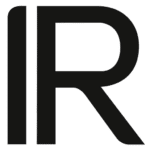This article was produced by ELITE Connect and originally published on the ELITE Connect platform
Introduced in 2011, the Sustainability Accounting Standards Board (SASB) provides a framework for sustainability accounting standards that help public corporations disclose to investors information, material and results that focus on social and environmental issues, as well as pure financial performance.
Louis Coppola is co-founder and executive vice president of the Governance & Accountability Institute. He believes SASB, with its industry-specific guidelines, is a crucial tool for companies looking to communicate their sustainability credentials.
‘Many American companies are leaders in sustainability, which makes them much more attractive to the sustainable investors looking for something beyond the financial,’ he observes. ‘These companies are completing their own comprehensive materiality assessments in which they are engaging with many different important stakeholders such as customers, employees, investors, regulators, communities, academics, partners and supply chains. SASB is a great guide for them right now, as an important part of this more holistic approach, because three years of effort by SASB is telling them what the investor is looking for in their industry.’
For David Creelman, CEO of Creelman Research, SASB presents corporates with the opportunity not only to demonstrate success, but also to shape future business activity. ‘It will be a colossal waste of money if SASB just becomes a compliance exercise,’ he comments. ‘It’s meant to be a gift to CEOs who feel their board and investors are too narrowly focused on financial measures and overlooking other key drivers of success – for example, the human capital standards that can bring attention and rigor to issues like talent acquisition and training. A CEO can use SASB reporting to convince the board that spending on human capital is an investment and should be treated as such. The reporting can be used to mitigate the short-term focus on profits that undermines the longer-term growth of the company.’
Susanne Stormer, vice president for corporate sustainability at Novo Nordisk, shares her experience with SASB. ‘The key to success for any company is to focus on its material issues. This is where we find SASB requirements have been most helpful: their sector-by-sector approach has been instrumental for defining material issues. To successfully satisfy the SASB requirements doing a materiality assessment is pivotal, and corporates can use this as guidance.
‘In the case of Novo Nordisk, we have identified our most material issues based on business strategy and priorities, and informed by what investors, analysts and other critical stakeholders expect, as well as analyses of our current business environment and emerging challenges. We compared the outcome of this process with the issues identified by SASB as the most material issues for the pharmaceutical sector, and indeed there was good alignment and consistency.’
Both Stormer and Creelman are, however, advocates of tailoring the suggested framework guidelines to suit the company concerned.
‘My advice would be to start with a blank sheet of paper and think about the sustainability factors you feel are material to your company and then work back to see how they map to the SASB standards,’ suggests Creelman. ‘This may seem like an extra effort but it ensures the process is focused on something of value to the organization. SASB should be seen as a resource to guide your thinking, not as a set of rules to be followed.’
Stormer agrees. ‘With regard to the metrics defined by SASB, we do not adhere to them slavishly, and would argue that corporates should use them for inspiration, but define their own,’ she says. ‘My one top tip would be to invest time in getting the materiality assessment right, and getting it formally anchored into existing governance structures. Once that is in place, work can begin to carve out the right metrics, and build robust systems to capture and communicate performance.’







